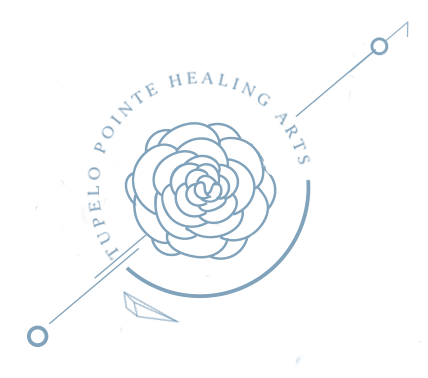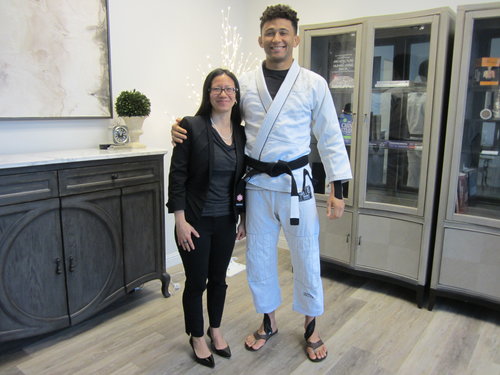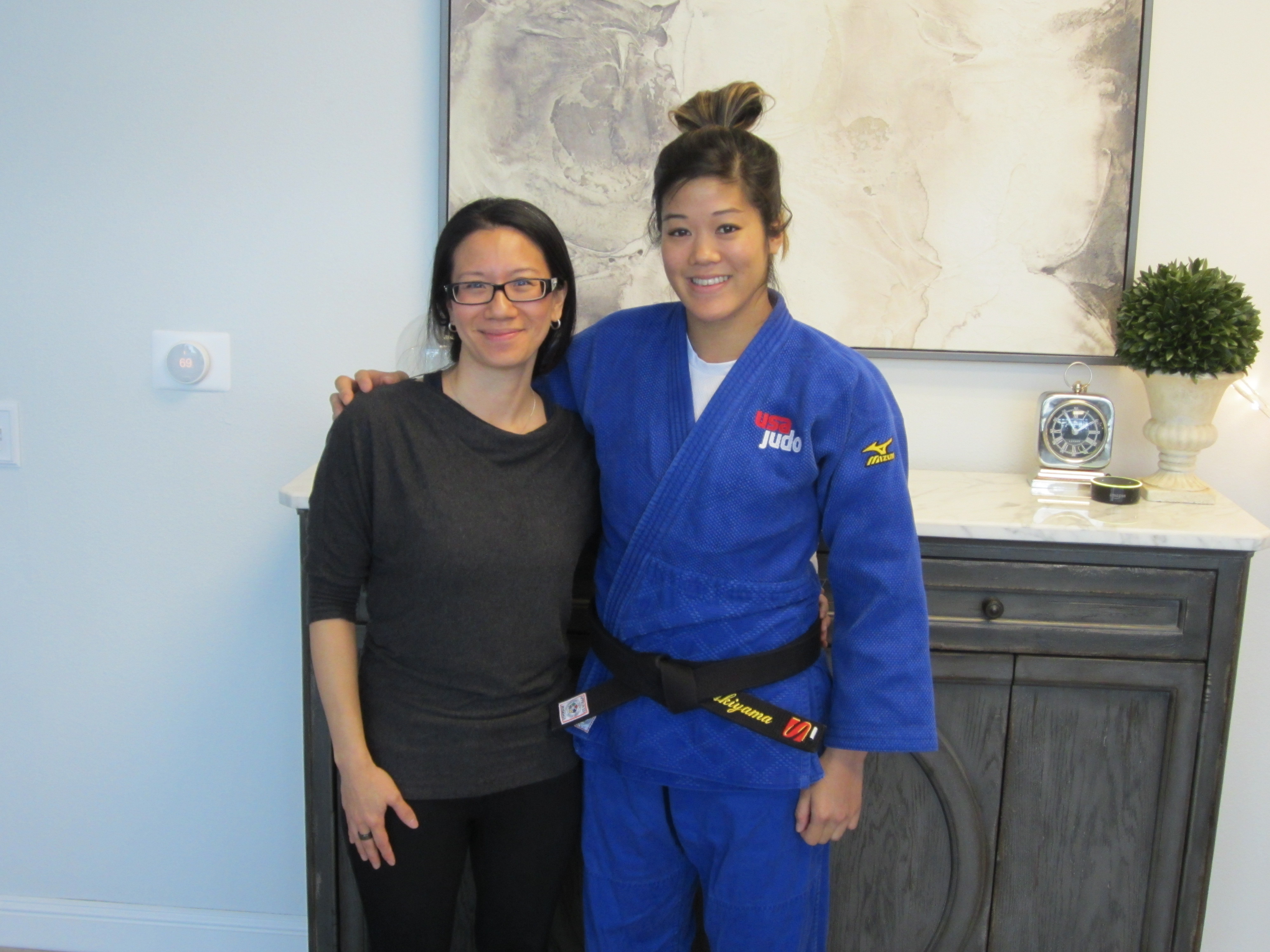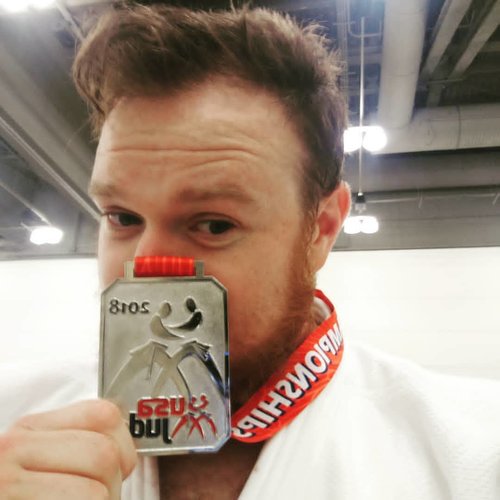April Newsletter: Pandemic
The content on this newsletter is for educational purposes only and should not be used as a substitute for medical advice. Please consult with your healthcare provider ASAP if you develop symptoms.
We are still in the midst of a global COVID-19 pandemic. As of today, testing is still not readily available and data is still poor. However, data does support that California is doing well and flattening the curve. As a professor and attending physician at a major academic institution, I am called upon to serve in this time of crisis and in the event that California does not do well. Below I have included an excerpt of a manuscript that I have submitted to a leading medical journal regarding rehabilitation of COVID-19 patients.
Take away points:
- Stay healthy or get healthy.
- If you become ill with any respiratory illness, the best remedy is to physically move.
- There is a lot you can do physically and psychologically before and in the event you get sick to maximize your chances of doing well.
Excerpt:
Patients should be educated on the clinical course of COVID-19 and with individualization based on patient comorbidities.1 The patient, including asymptomatic family members, may be counseled to wear surgical masks;3 Sars-CoV2 has a high transmission rate and a long asymptomatic prodromal phase with a range of 2-14 days and and a mean of 3-7 days.2 Mathematical modeling shows that mask use with 50% compliance during a viral outbreak can curb the spread with a 50% decrease in prevalence and 20% decrease in cumulative incidence.3
Breathing exercises may be employed at this stage (Table 1). Diaphragmatic breathing involves coaching the patient to predominantly engage the diaphragm while minimizing the action of accessory muscles.3 Nasal inspiration should be encouraged to facilitate recruitment of the diaphragm and enhance humidification4 Active abdominal muscle contraction should be employed at the end of expiration to increase abdominal pressure and push diaphragm up to a more favorable length-tension.5Yoga and in particular Viniyoga coordinates breathing with arm lifts or body positioning during the inspiratory or expiratory phase. Pranayama, Tai Chi6, and singing also employ timed breathing techniques.
Application of airway clearance techniques can significantly reduce the need for ventilatory support, days of mechanical ventilation and hospitalization.10 Airway clearance techniques aim to help airway clearance by mobilizing mucus in a cephalad direction from the peripheral to upper airway, promoting the recruitment of lung volume, and eliminating mucus by cough or forced expectoration.6 Physical exercise is a cornerstone of pulmonary rehabilitation and has been shown to facilitate airway clearance.8 In acute phases, early mobilization and physical exercise are preferred and more effective than mucus clearance techniques, and mucus clearance techniques should not be used alone or take precedence over physical movement.9
Lung volume recruitment maneuvers include air stacking and glottis holding. Air stacking involves delivery of air via Ambu bag7. Glossopharyngeal breathing is a form of positive pressure breathing technique that can be used to assist failing respiratory muscles and increase tidal volumes. It involves successive inhale of boluses of air and pushing them into the lungs.8 The 3-second breath hold is a method of ventilating obstructed lung segments. A pause for 3 seconds allows for Pendelluft flow where air moves from unobstructed regions to the obstructed regions of the lung.9
Forced expiration maneuvers like the huff cough can be used to propel secretions. A huff cough is performed with an open glottis where equal pressure point dynamic compression of the airways creates an increase in the linear velocity of the expiratory airflow and propels secretions. Initiating a forced expiration at a low lung volume shifts the equal pressure point to the periphery and small airways. A forced expiration from a high lung volume will move the equal pressure point centrally towards the large central airway.10
Posture plays an important role in respiratory function12 and patients can be encouraged to engage in erect head and neck positioning during respiratory treatment and at all times when possible. External vibration if available may be applied with oscillation frequencies less than 17 Hz to improve mucociliary clearance.24
Positioning is effective, simple, and easy to accomplish.11 Positioning may be preferable over other techniques like postural drainage given the pathophysiology of COVID-19 and the observed V/Q mismatch.11,12 13 Sitting and standing are the preferred positions in non-critically ill patients to maximize lung function including FVC, increase lung compliance and elastic recoil, and shift mediastinal structures, and provide mechanical advantage in forced expiration.13,14,14 This specifically includes patients without comorbidities, with asthma, with COPD, with obesity, with CHF, with neuromuscular conditions.
Targeted positioning may be used to enhance ventilation, perfusion, oxygenation and mobilization of secretions in specific lung regions of consolidations through gravity.21 Perfusion is greater to the dependent lung segments in all positions.15 Preferential ventilation changes based on position. Two minutes in each position while engaging in breathing exercises may be sufficient to ventilate/perfuse targeted lung segments.15 Targeted positions may be determined by the location of consolidations seen on imaging or found on examination.1
In the upright position, ventilation preferentially occurs in the mid and lower lobes with perfusion greatest in the lower lobes.16 Patients may rest in a supine position occasionally to aid in DLCO. DLCO increases in the supine position in healthy subjects.17 Supine position also preferentially ventilates the upper lobes.16
In adults side-lying position preferentially ventilates the dependent lung by maximizing the length-tension ratio in the dependent hemi-diaphragm and negative pleural pressure.18 In young children <12-years-old side-lying position preferentially ventilates the nondependent lung and closing of airway in depend regions. Side-lying may be a good position during administration of inhaled drug with improved deposition by 13% to the dependent upper lobe.15
Prone positioning for 2 minutes duration may aid in ventilation to dorsal lung through reduction in lung compression by the heart in the semi-prone position due to ventral displacement of the heart24 with increases in end-expiratory transpulmonary pressure and expiratory reserve volume,25 more homogenous lung inflation from dorsal to ventral and improvement in oxygenation.26 Proning has been used in the ICU to improve gas exchange in ARDS and improve Pa/FiO2 in patients on mechanical ventilation and reduces cardiovascular comorbidities.19
Patients may be encouraged to engage in routine stretching three times a day. Stretching has been shown to increase compliance by as much as 50mL. Stretches should include neck, upper chest, pectoralis major, lateral chest stretches20 and flexion and extension to mobilize the facet joints. The dorsal chest wall has been shown to be less compliant in patients with ARDS.21
Osteopathic manipulation if its appropriate may be helpful and should address autonomics, lymph drainage, and rib cage mobility.30 The patient may also be taught modified segmental breathing where the patient applies pressure to their own thoracic cage to resist respiratory excursion in one area of the thoracic cavity and to facilitate the expansion of adjacent regions of the thoracic cavity that may have decreased ventilation and mobility.22
Education regarding proper nutrition is particularly important in COVID-19 as studies from Western countries are showing that obesity to be a significant risk factor for severity of disease with at least ⅔ of ICU patients having overweight BMI.23 In obesity, lung function is also impaired.24
Routine monitoring with chest x-ray and PFT may be considered in the outpatient setting particularly within 6 months of infection and for severe and critical patients. Pulmonary fibrosis may occur in as many as 45% (diagnosed by xray and CT scan) 1 month after infection, 30-36% 3-6 months after infection,25 28% 1 year after infection.25 After SARS-CoV infection, severity of fibrosis and disability correlated with the severity and duration of illness.26,27 Improvement in lung function in SARS-CoV patients plateaued at 6 months with continued disability particularly in DLCO 2 years after infection.28
Table 1: Proposed Content for Mild Disease
Patient Education
- Educate patient about individual statistics based on comorbidities and clinical course of the disease.
- Encourage good lifestyle habits like adequate sleep, hydration, proper nutrition, etc.
Physical Activity Recommendations
- Exercise intensity: Borg dyspnea score ≤ 3
- Exercise frequency: 1-2 times per day, 3-4 times a week
- Exercise duration: 10-15 minutes for first 3-4 sessions and incrementally increase. 15-45 min each session
- Exercise type: walking, biking
- Progression: Incrementally increase work load/effort every 2-3 sessions to target Borg score 4-6 and target total duration to 30-45 minutes
Psychological intervention
- Counsel about social support
- Provide resources including professional psychiatric professionals
Airway clearing
- Expectorant hygiene into closed container to prevent aerosolization of sputum
- Huff Cough
Breathing Exercises
- Techniques: Diaphragmatic breathing, Pursed lip breathing, Active abdominal contraction, Yoga, pranayama, Tai Chi, singing
- Frequency: 2-3 times / day, daily
- Duration: 10-15 minutes for first 3-4 sessions
- Progression: Incrementally increase duration every 2-3 sessions towards a total goal duration of 30-60 minutes
(Adapted from The Chinese Association of Rehabilitation Medicine3 and American Thoracic Society (ATS)/European Respiratory Society2)
Table 2: Airway Clearance Techniques
Lung volume recruitment
- Posture
- Air stacking
- Glossopharyngeal breathing
- 3 second breath hold
Positioning
- Supine upper lobes
- Sitting - lower lobes
- Side lying - dependent lobe adults, non-dendepent children
Forced expiratory maneuver
- Huff Cough
Vibration
- Frequency <17 Hz
Table 3: Proposed Acute Management
Patient Education
- Educate patient about individual statistics based on comorbidities and clinical course of the disease
- Educate patient about the importance of posture and accessory muscle use
- Education regarding nutrition and weight
Activity recommendations
- Exercise intensity: Borg dyspnea score ≤ 3
- Exercise frequency: 2 times / day, daily
- Exercise time 10-15 minutes first 3-4 sessions
- Exercise type: bed mobility, sit to stand, ambulation, breathing rehabilitation exercises, Yoga, Tai Chi
- Progression: Incrementally increase work load/effort to Borg score 4-6 and duration to 30-45 minutes every 2-3 session
Psychological intervention
- Counsel about social support and encourage phone calls and communication with family.
- Consult professional psychiatric services as necessary.
Airway clearance
- Expectorant hygiene into closed container to prevent aerosolization of sputum
- Airway clearance techniques as needed
(Adapted from The Chinese Association of Rehabilitation Medicine4 and American Thoracic Society (ATS)/European Respiratory Society3)
References:
1. Rodriguez-Morales AJ, Cardona-Ospina JA, Gutiérrez-Ocampo E, et al. Clinical, laboratory and imaging features of COVID-19: A systematic review and meta-analysis. Travel Med Infect Dis. March 2020:101623. doi:10.1016/j.tmaid.2020.101623
2. Guo Y-R, Cao Q-D, Hong Z-S, et al. The origin, transmission and clinical therapies on coronavirus disease 2019 (COVID-19) outbreak – an update on the status. Military Med Res. 2020;7(1):11. doi:10.1186/s40779-020-00240-0
3. Gosselink R. Breathing techniques in patients with chronic obstructive pulmonary disease (COPD). Chron Respir Dis. 2004;1(3):163-172. doi:10.1191/1479972304cd020rs
4. Elad D, Wolf M, Keck T. Air-conditioning in the human nasal cavity. Respir Physiol Neurobiol. 2008;163(1-3):121-127. doi:10.1016/j.resp.2008.05.002
5. Casciari RJ, Fairshter RD, Harrison A, Morrison JT, Blackburn C, Wilson AF. Effects of breathing retraining in patients with chronic obstructive pulmonary disease. Chest. 1981;79(4):393-398. doi:10.1378/chest.79.4.393
6. Ngai SPC, Jones AYM, Tam WWS. Tai Chi for chronic obstructive pulmonary disease (COPD). Cochrane Database Syst Rev. 2016;(6):CD009953. doi:10.1002/14651858.CD009953.pub2
7. Kang SW, Bach JR. Maximum insufflation capacity: vital capacity and cough flows in neuromuscular disease. Am J Phys Med Rehabil. 2000;79(3):222-227. doi:10.1097/00002060-200005000-00002
8. Maltais F. Glossopharyngeal breathing. Am J Respir Crit Care Med. 2011;184(3):381. doi:10.1164/rccm.201012-2031IM
9. Crawford AB, Cotton DJ, Paiva M, Engel LA. Effect of airway closure on ventilation distribution. J Appl Physiol. 1989;66(6):2511-2515. doi:10.1152/jappl.1989.66.6.2511
10. McIlwaine M, Bradley J, Elborn JS, Moran F. Personalising airway clearance in chronic lung disease. Eur Respir Rev. 2017;26(143):160086. doi:10.1183/16000617.0086-2016
11. Fink JB. Positioning versus postural drainage. Respir Care. 2002;47(7):769-777.
12. Tang X, Du R, Wang R, et al. Comparison of Hospitalized Patients with Acute Respiratory Distress Syndrome Caused by COVID-19 and H1N1. Chest. March 2020:S0012369220305584. doi:10.1016/j.chest.2020.03.032
13. Gattinoni L, Coppola S, Cressoni M, Busana M, Chiumello D. Covid-19 Does Not Lead to a “Typical” Acute Respiratory Distress Syndrome. Am J Respir Crit Care Med. March 2020. doi:10.1164/rccm.202003-0817LE
14. Manning F, Dean E, Ross J, Abboud RT. Effects of side lying on lung function in older individuals. Phys Ther. 1999;79(5):456-466.
15. Dentice RL, Elkins MR, Dwyer GM, Bye PTP. The use of an alternate side lying positioning strategy during inhalation therapy does not prolong nebulisation time in adults with Cystic Fibrosis: a randomised crossover trial. BMC Pulm Med. 2018;18(1):3. doi:10.1186/s12890-017-0568-2
16. Bailey DL, Farrow CE, Lau EM. V/Q SPECT-Normal Values for Lobar Function and Comparison With CT Volumes. Semin Nucl Med. 2019;49(1):58-61. doi:10.1053/j.semnuclmed.2018.10.008
17. Katz S, Arish N, Rokach A, Zaltzman Y, Marcus E-L. The effect of body position on pulmonary function: a systematic review. BMC Pulm Med. 2018;18(1):159. doi:10.1186/s12890-018-0723-4
18. Bhuyan U, Peters AM, Gordon I, Davies H, Helms P. Effects of posture on the distribution of pulmonary ventilation and perfusion in children and adults. Thorax. 1989;44(6):480-484. doi:10.1136/thx.44.6.480
19. Guérin C, Reignier J, Richard J-C, et al. Prone Positioning in Severe Acute Respiratory Distress Syndrome. N Engl J Med. 2013;368(23):2159-2168. doi:10.1056/NEJMoa1214103
20. Rattes C, Campos SL, Morais C, et al. Respiratory muscles stretching acutely increases expansion in hemiparetic chest wall. Respiratory Physiology & Neurobiology. 2018;254:16-22. doi:10.1016/j.resp.2018.03.015
21. Pelosi P, D’Andrea L, Vitale G, Pesenti A, Gattinoni L. Vertical gradient of regional lung inflation in adult respiratory distress syndrome. Am J Respir Crit Care Med. 1994;149(1):8-13. doi:10.1164/ajrccm.149.1.8111603
22. Harmony WN. Segmental breathing. Phys Ther Rev. 1956;36(2):106-107. doi:10.1093/ptj/36.2.106
23. Intensive Care National Audit & Research Centre. ICNARC Report on COVID-19 in Critical Care. Intensive Care National Audit & Research Centre; 2020.
24. Chlif M, Temfemo A, Keochkerian D, Choquet D, Chaouachi A, Ahmaidi S. Advanced Mechanical Ventilatory Constraints During Incremental Exercise in Class III Obese Male Subjects. Respir Care. 2015;60(4):549-560. doi:10.4187/respcare.03206
25. Hui DS, Joynt GM, Wong KT, et al. Impact of severe acute respiratory syndrome (SARS) on pulmonary function, functional capacity and quality of life in a cohort of survivors. Thorax. 2005;60(5):401-409. doi:10.1136/thx.2004.030205
26. Xie L, Liu Y, Xiao Y, et al. Follow-up Study on Pulmonary Function and Lung Radiographic Changes in Rehabilitating Severe Acute Respiratory Syndrome Patients After Discharge. Chest. 2005;127(6):2119-2124. doi:10.1378/chest.127.6.2119
27. Venkataraman T, Frieman MB. The role of epidermal growth factor receptor (EGFR) signaling in SARS coronavirus-induced pulmonary fibrosis. Antiviral Res. 2017;143:142-150. doi:10.1016/j.antiviral.2017.03.022
28. Ngai JC, Ko FW, Ng SS, To K-W, Tong M, Hui DS. The long-term impact of severe acute respiratory syndrome on pulmonary function, exercise capacity and health status. Respirology. 2010;15(3):543-550. doi:10.1111/j.1440-1843.2010.01720.x
The content on this newsletter is for educational purposes only and should not be used as a substitute for medical advice. Please consult with your healthcare provider prior to initiating treatments.






